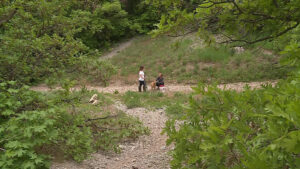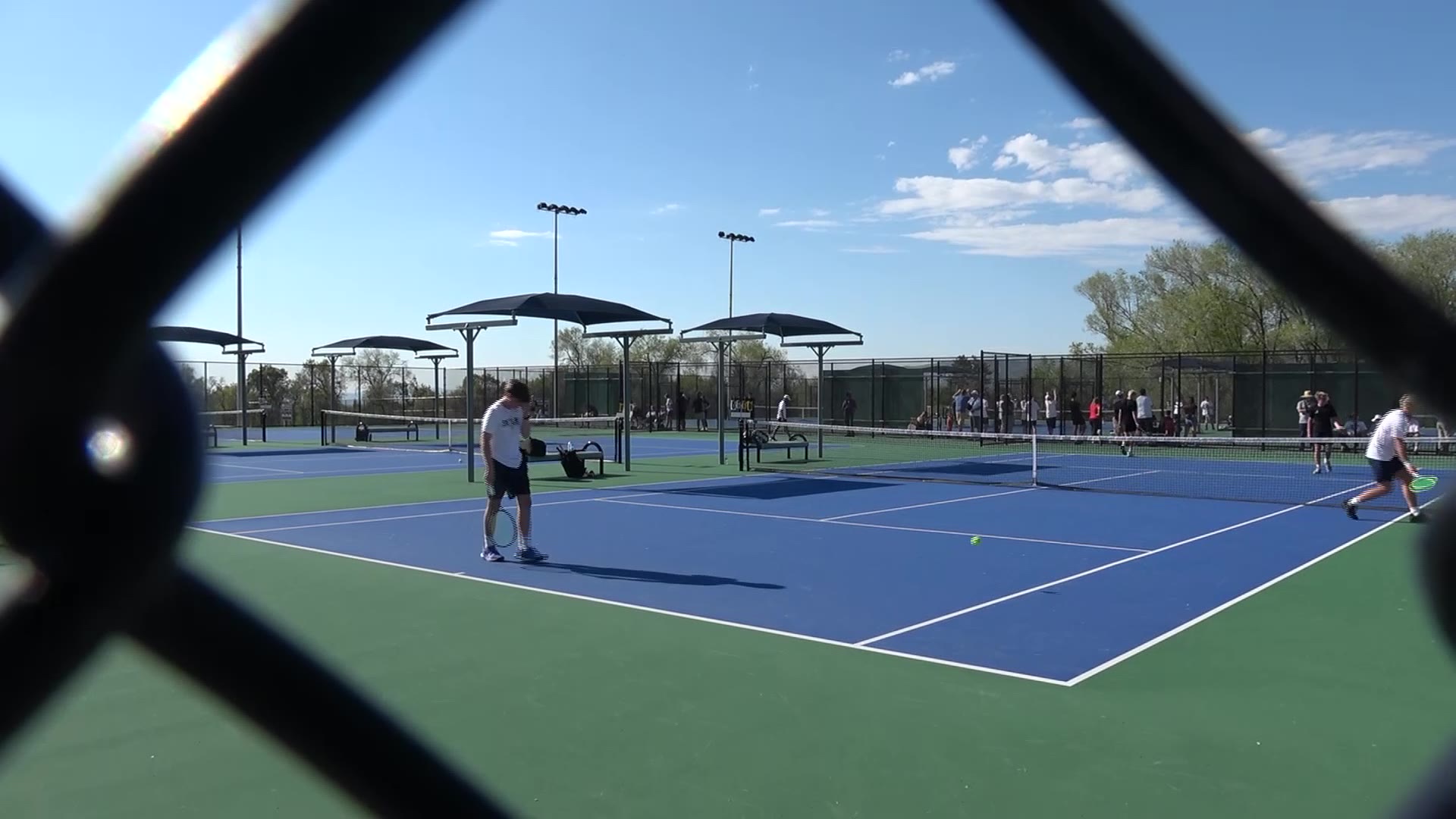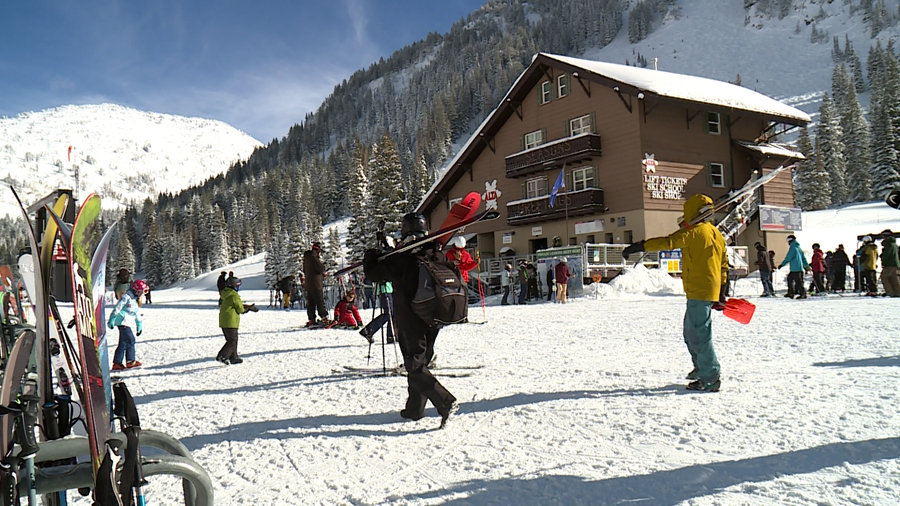Rattlesnakes are appearing on Utah trails, around homes later than normal
May 28, 2023, 10:16 PM | Updated: May 29, 2023, 2:17 pm
SALT LAKE COUNTY, Utah — As the trail name “Rattlesnake Gulch” suggests in Millcreek Canyon, hikers may come across snakes, even if it’s not a rattlesnake.
On Sunday evening, Kim Beck hiked up the trail with long metal pole tools and a bucket that said “DANGER: VENEMOUS REPTILES” on the side.
She stopped to talk to a woman as the woman hiked with her dog.
“We just ran into a snake,” the woman said.
“A rattlesnake?” Beck asked.
“I don’t think it was a rattler, but it was a pretty big one. But she doesn’t know,” the hiker answered, explaining that her dog doesn’t know to stay away from snakes.
“You’re smart to keep her on a leash,” Beck responded.
Beck, who owns Top Dog Snake Finders, has started receiving more reports of rattlesnakes on trails and around homes. She said someone recently called her, reporting a huge snake on the second right fork of the Pipeline Trail in Millcreek Canyon.
Calls are picking up later in the year than usual.
“It’s a little later this year because we had the never-ending winter this year,” she said with a chuckle. “So it took the snakes a little longer to come out.”
With her tools and bucket, Beck will respond to neighborhoods, trails, and houses to relocate rattlesnakes. She said she also works with animal control agencies when they receive reports of rattlesnakes.
“I will remove the snake and take it someplace similar in the environment that would be safe for it, away from people, and just turn it loose again,” she said.
Beck said rattlesnakes could be relocated up to a half mile or mile at most away from where they’re found. Any further and the snake will die, she said, because rattlesnakes are territorial and need to stay close to their den and water and food sources.
While she’s an expert at spotting rattlesnakes to remove and relocate them, she also urges people to learn about them, especially for hiking.
Beck said to be careful of wood piles and landscaping boulders around homes and yards. She said rattlesnakes can be found in woodpiles and in the cracks around the boulders and may bite if someone reaches in.
For those out hiking, Beck said to stay aware of your surroundings and watch where you put your hands and feet.
Just like with landscaping boulders, she talked about how it’s important to look before sitting on large rocks or grabbing onto them on the trail.
“The snakes like to hang out in little crevices like this,” Beck said, sticking her pole under a rock. She then walked over to a tree. “Or this would be a great place underneath trees and bushes.”
She recommended dog owners and their pups go through a K9 rattlesnake aversion course, which she teaches through her business Top Dog Snake Finders.
She indicated that dog owners should keep their dogs leashed on hikes, especially on trails like Rattlesnake Gulch, which are known snake hangout spots.
Beck described how you can tell it’s a rattlesnake if the head is more triangular and if there’s a rattle on the tail. She said non-venomous bull snakes, which look very similar, have straight heads and will vibrate their tail like a rattlesnake.
She said it is illegal to kill a rattlesnake because they’re a protected species. Do not approach, throw rocks at, or try to catch them.
Beck explained that rattlesnakes will not chase people down to attack them, and in fact, most will try to get away. She said they go into “fight or flight” mode.
“Just leave it alone,” she expressed. “Go way around it.”
If you find a rattlesnake hanging around your home or across the trail and potentially posing a danger to other hikers, she is happy to come to handle it.
“We want to keep people safe, and their dogs safe,” she said, “but I also want to keep the snakes safe.”
If you wish to contact Beck to get a rattlesnake removed, you can go to her website.
















